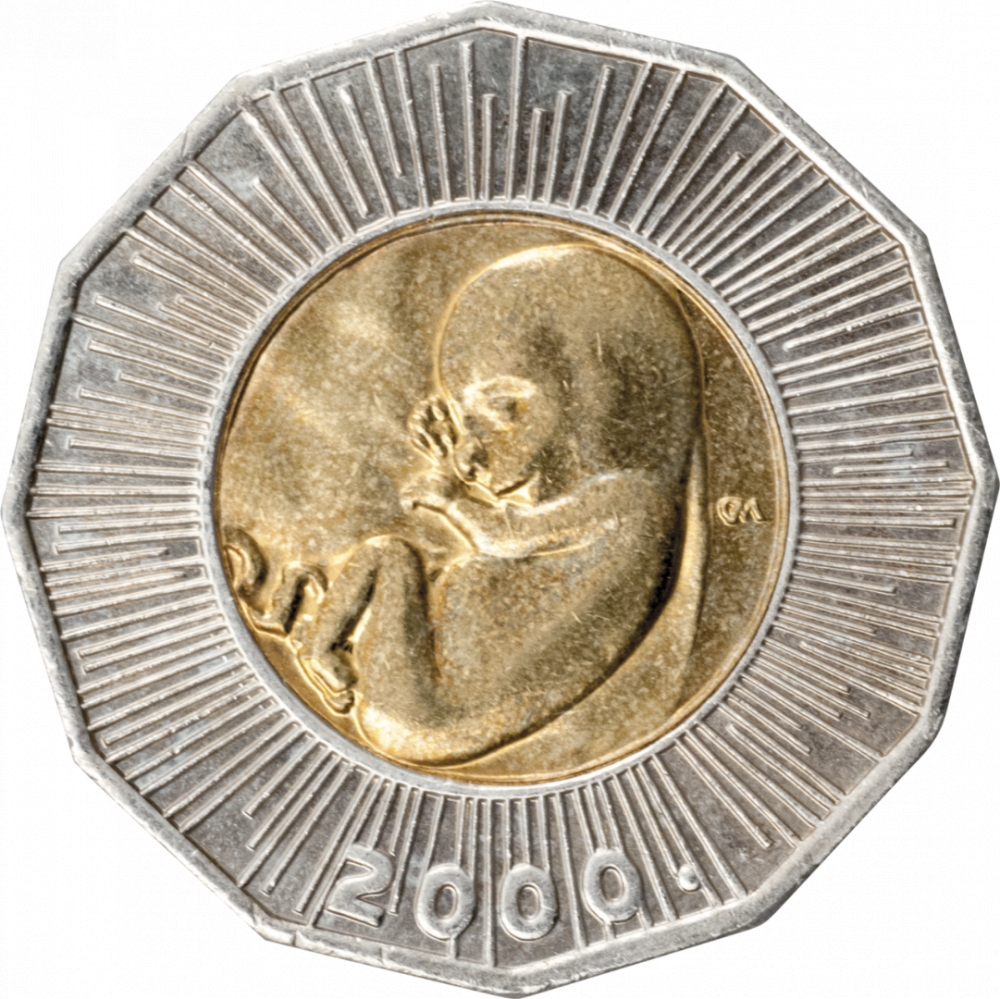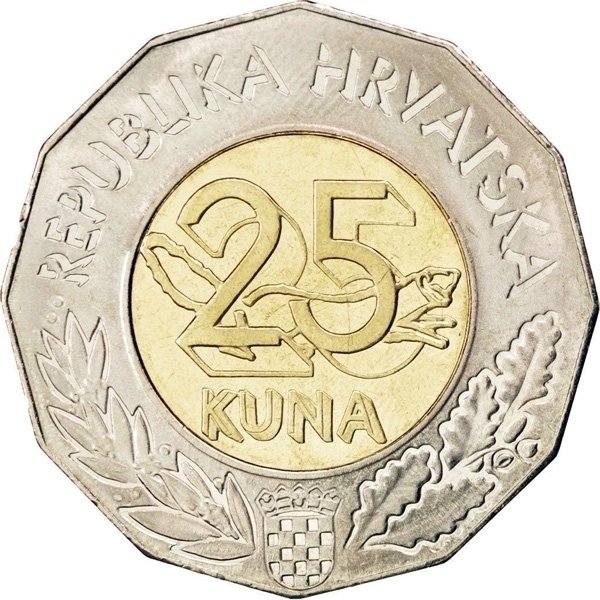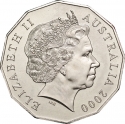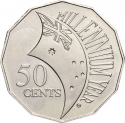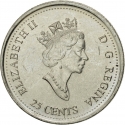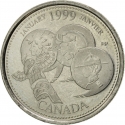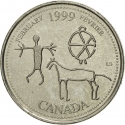You are about to finish your registration. Please check your mailbox (including spam folder). There should be a letter with a confirmation link. Check setting to make sure that your e-mail address is correct.
Send letter againDescription
The coin commemorates the 3rd millennium. A millennium (plural millennia or, rarely, millenniums) is a period equal to 1000 years. It derives from the Latin mille, thousand, and annus, year.
Release date: 7 November 2000
Designer: Damir Mataušić
Obverse

|
The coin's core carries an image of a fetus, a universal symbol of human life, at the centre of both the millennium that ends and the new millennium that begins, which is symbolized by a sequence of rays within the coin's ring. The year 2000 is placed centrally at the lower part of the coin ring. On the right side of a brass ring is placed signature of the engraver (DM). DM |
|---|---|
Reverse

|
The central part of the coin's core carries the designation of the nominal value 25. Within the numeral outlines, the figure of a pine marten running towards the right is shown; the marten's body is integrated with the numeral denoting the nominal value. In the bottom, central part of the coin's ring the coat of arms of the Republic of Croatia is impressed. A blooming laurel branch is placed in a semicircle on the left to the coat of arms, while a common oak branch with fruits is on the right. The top part of the ring carries the semicircular inscription The Republic of Croatia. REPUBLIKA HRVATSKA |
| Edge |
25 Kuna
Third Millennium
Human Fetus
Subscribe series
KM# 65
Third Millennium
Human Fetus
Characteristics
| Type | Commemorative Issue (Circulating) |
| Material | Copper Aluminum Nickel |
| Weight | 12.75 g |
| Diameter | 32 mm |
| Thickness | 2.2 mm |
| Shape |
|
| Sides | 12 |
| Alignment | Medal |
| Mint |
Croatian Monetary Institute (HNZ)
|
